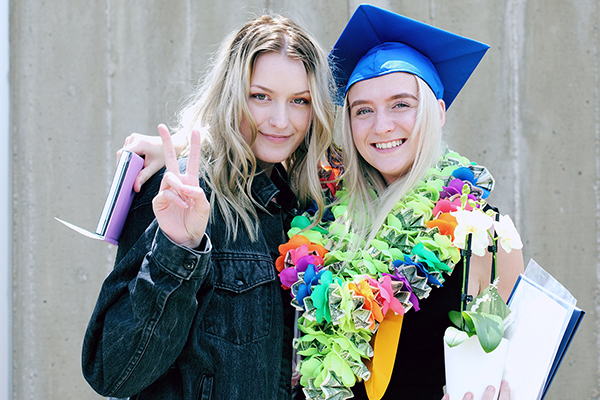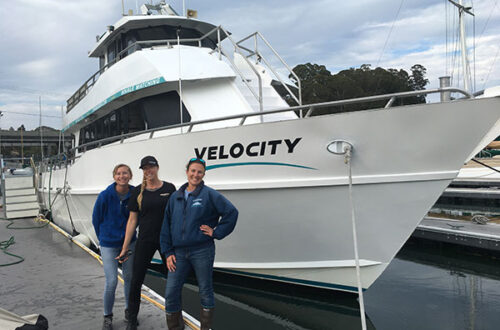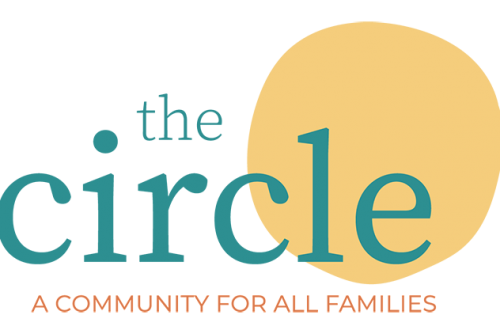High School Grads are Exploring New Options
The pandemic hasn’t stifled them. It’s opened new doors
By Jeanette Prather
Gap years, YouTube sites, starting college while in high school…these are some of the new ways local teens are facing graduating during a historically challenging pandemic. Many have given up on the usual go directly to college path.
“It’s been a full year since COVID-19 flipped life on its head. High school students everywhere have adapted to quarantine, switched to online learning, and seen their junior and senior years widely transformed,” wrote blogger Jeff Rutherford early in 2021 on KnowledgeMatters.com.
“At the forefront are our 2021 high school graduates, who are preparing to walk into a world that has seen traditional pathways to the workforce changed dramatically. With unemployment still high, vaccines still rolling out, and an increasingly digital workforce, it’s no wonder that graduating students feel overwhelmed.”
Rutherford says support for these recent grads can range from helping equip students with virtual job-hunting skills (including optimizing resumes with keywords and setting up students with professional social media accounts); inspiring students to master hard skills by utilizing free course and certification programs; preparing students to align the short-term with the long-term through exploration of multiple career options and actionable future plans; and reminding students of the ever-evolving adage, “Anything can happen!”
Within the chaos, however, there seems to be some respite offering a breath of fresh air to upcoming graduates through a growing gap year trend.
Gap year
“The pandemic and all that has happened to me and my family this year changed my perspective on life,” said Kirby School graduating senior, Fiona Landau, who is currently planning a year abroad of studying in Denmark. “It made me think about what’s important to me. It has always been a dream of mine to spend a year abroad. I decided to live my life doing what will make me the happiest.”
She says she would have gone directly to college in a regular year because that’s what everyone else would be doing. “But the disruption of COVID made her more open to following her dreams,” said Kirby School Communications Director, Paige Berardo. “We do have a couple of students who decided to take a gap year, citing that the pandemic gave them the freedom to explore alternative paths to college.”
gap year is a growth in progress, a reflection year, said Ger Vue, school counselor of Roseville Area Schools in Minnesota. “The gap year is more common now with the pandemic. In the past it was a smaller percentage as the trend was going to college or a trade school.”
Vue said that if the student has a clear purpose and focus for why they want to take a gap year, as well as what they’d like to get from it, the experience can be very beneficial.
“In high school, there are constant daily reminders about what a student will do post-graduation,” he said. “Once you leave that setting and really embark on adulthood, there aren’t a lot of people who will prompt you or ask questions about the future anymore. Setting a deadline and point of return (for example, committing to a six-month gap year) is a good idea because once you wait too long, you’ll have bills, loss of concentrated education, and other grown-up things to worry about.”
Financial impact
Another critical factor for upcoming high school graduates and their families, according to Vue is the cost.
“Financial literacy and understanding the cost of education should remain in the back of family and students’ minds,” he said. “You can’t talk about graduation without talking about student debt. There is $1.7 trillion in student debt. How are upcoming graduates going to navigate that? It’s critical for families to educate themselves about finance, especially these days.”
Dual enrollment
Some high school students have started college, virtually, during the pandemic.
“Taking simultaneous dual college and high school courses presents a small solution in regard to collegiate expenses,” he said.
Four-year School
Locally, student options look similar while the four-year academic plans mostly remain intact.
“Kirby students are still mainly pursuing four-year degrees after graduation,” said Berardo. “There has been a slight uptick in students beginning their degrees at a local community college with the intent of transferring to a UC, primarily due to increased costs of higher education.”
Berardo admits that although Kirby School hasn’t experienced that drastic a difference in trends post-graduation, she does notice some student options that have opened in favor of specific student groups.
“We also noted that students with strong GPAs applied to more colleges than they had in past years because of the absence of standardized testing (the SAT/ACT),” she said. “Test-optional proved advantageous for many, creating new opportunities to apply to a wider breadth of schools. Test-optional also helped with student stress levels during a very stressful year.”
To no one’s surprise, students have had to think out of the box, along with everyone else.
“Counselors are helping to deal with and guide students into expanding their trajectories beyond the here and now because that’s essential as we’re currently, as a society, in survival mode,” said Vue. “We want to give them the options and choices to earn better. High school kids are resilient, and they’ll make things happen.”
You tube
A YouTube experiment is an example of what kids are doing, according to Rutherford.
The channel Unus Annus—which was online for only a year and was hugely popular– is a great representation of how much life can change as well as how impermanent things (especially virtually) are.
“Mark Fischbach (better known as Markiplier) and Ethan Nestor, uploaded vlog content every day for a year, and then deleted it all for good after a final 12-hour livestream,” said Rutherford. “The two YouTubers hoped to teach a dual lesson…anyone can change their life in the space of one year, and nothing, no matter what, is permanent.”
Nestor, who graduated high school in 2015 with his own story of an uncertain future, struck a deal with his parents that included a gap year post-high school to pursue his dream of becoming a YouTube gamer for 12 months. They agreed that if that failed, he would go to college. His current YouTube subscribership is over two million.
“It’s a fantastic case study in going after your dreams, and although you may not want to encourage your graduating class to place all their hopes in YouTube, it applies equally well to applying to selective universities, making a splash in the workforce right out of high school, or striking out on one’s own as a business owner,” wrote Rutherford. “Maybe it’s no longer the time to dismiss some students’ wilder dreams as impractical – not as long as they’re backed by a solid skill set and a clear plan of action. It’s 2021, after all. Anything can happen.”








